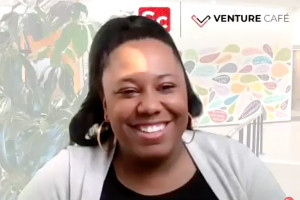Philadelphia Has an Overabundance of Medical Talent, LinkedIn Says

Photo credit: iStock/Portra
Last week, LinkedIn released its June 2017 workforce report, detailing hiring and job-seeking trends in 20 of the largest US metropolitan areas. The professional networking site began releasing monthly workforce reports at the start of 2017, compiling and analyzing data collected from more than 138 million users and 20,000 companies on the site.
So, now that we’ve got almost half a year’s worth of data on our hands, what does LinkedIn have to say about workers and job hunters in the Philadelphia area? Here are six noteworthy trends and figures from LinkedIn’s report.
- Hiring rates in Philadelphia are on the rise.
Even after being adjusted for seasonal variations – like mall Santas, Halloween store workers, and the pre-summer uptick of companies hiring student interns – hiring in May went up eight percent from April. Of LinkedIn’s five monthly reports on Philadelphia published this year, four have shown increases in hiring rates when compared to the same time last year. A slight dip of one percent occurred in March, while January saw an 11 percent increase from 2016, and hiring in April went up 24 percent. - Philadelphia’s got a glut of medical talent that’s contributing to a skills gap.
Despite the uptick in hiring, LinkedIn’s list of the most abundant skills in Philadelphia – professions for which the supply of local talent vastly outweighs the demand – is health care-heavy. Six of Philadelphia’s ten most abundant skills are in the medical and life sciences fields. The report suggests that this overabundance is likely a result of the high concentration of medical schools in the region. And with an abundance of medical positions, comes a skills gap for the city in industries like media and marketing. - Philadelphia ranks #5 nationally in skills abundance.
The city’s overabundance of healthcare skills is so vast that it puts us close to the top of the list for overall skills abundance. Only six cities other than Philadelphia count any healthcare and life science skills among their top ten most abundant, and only St. Louis has a list that includes more than two. Philadelphia is the only city whose top three abundant skills (pharmaceutical, healthcare management, and medical and healthcare) all fall in these fields. - We Are … Penn State.
The top city in the country sending workers to Philadelphia? Good ol’ State College, Pa. Following the migration of Penn State grads to the city are workers from Allentown, Scranton, and Reading. Additionally, the percentage of workers coming into Philadelphia from in-state (versus out-of-state) cities is notably larger than the same numbers for most other major metropolitan areas. - Those who leave Philly tend to move West.
When workers decide to leave Philadelphia, the majority of them are heading to California in true Fresh Prince style. In the past year, Philadelphia has lost the most workers to the San Francisco Bay Area, despite a recorded 12 percent decrease in the net number of national workers moving to that region since February. Further down the California coast, Los Angeles is the second most popular destination for those leaving Philadelphia. A smaller contingent of workers choose to stay east, making Washington, D.C. the city with the third highest rate of workers arriving from Philadelphia. - The engineering boom is spreading cross-country.
Across the U.S., the hiring rates for some of the 13 major industries tracked by LinkedIn have shot up in May. The three largest increases have been in the architecture and engineering industry (up 21 percent), the aerospace, automotive, and transportation industry (up 19 percent), and the manufacturing and industrial industry (up 19 percent). This trend comes on the heels of a noticeable software industry hiring increase in May. If they continue, the industry-specific trends could bring some big changes to Philly’s tech landscape.
Follow @HaleySWeiss on Twitter.


